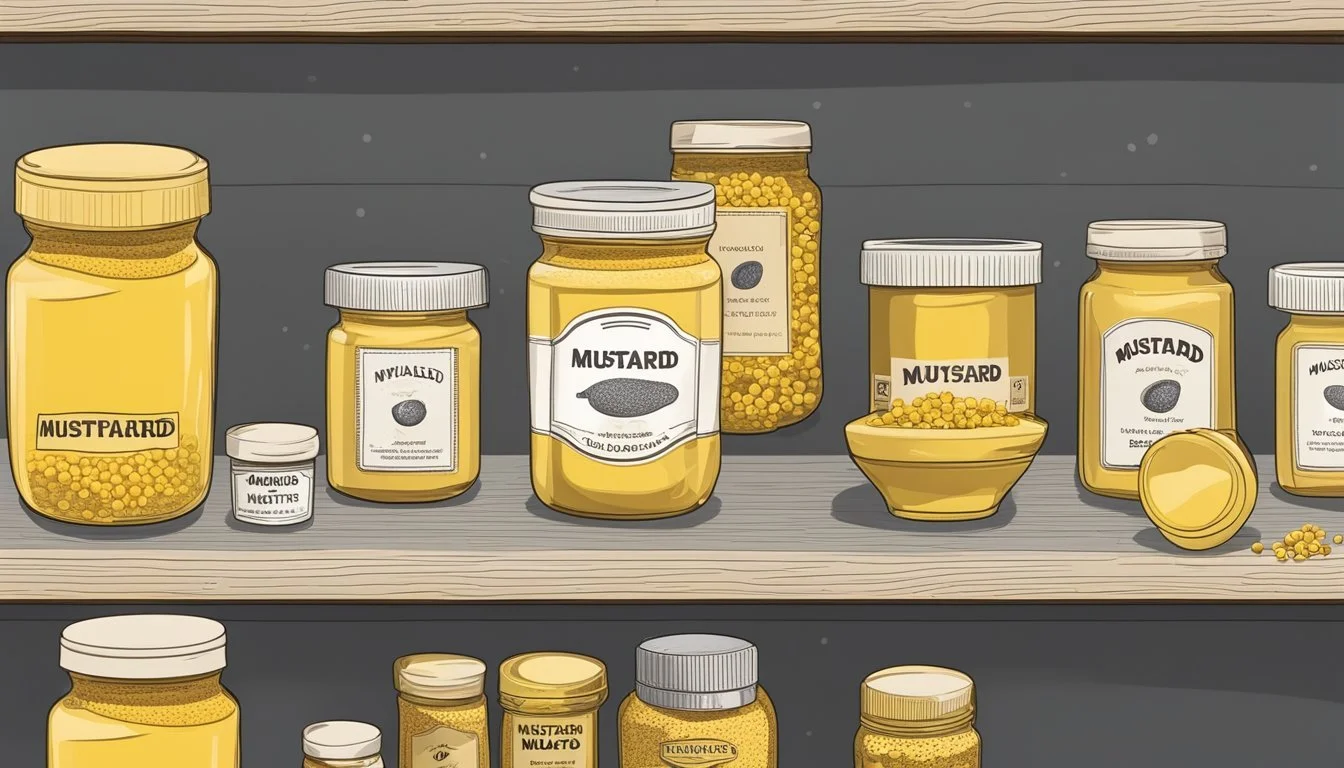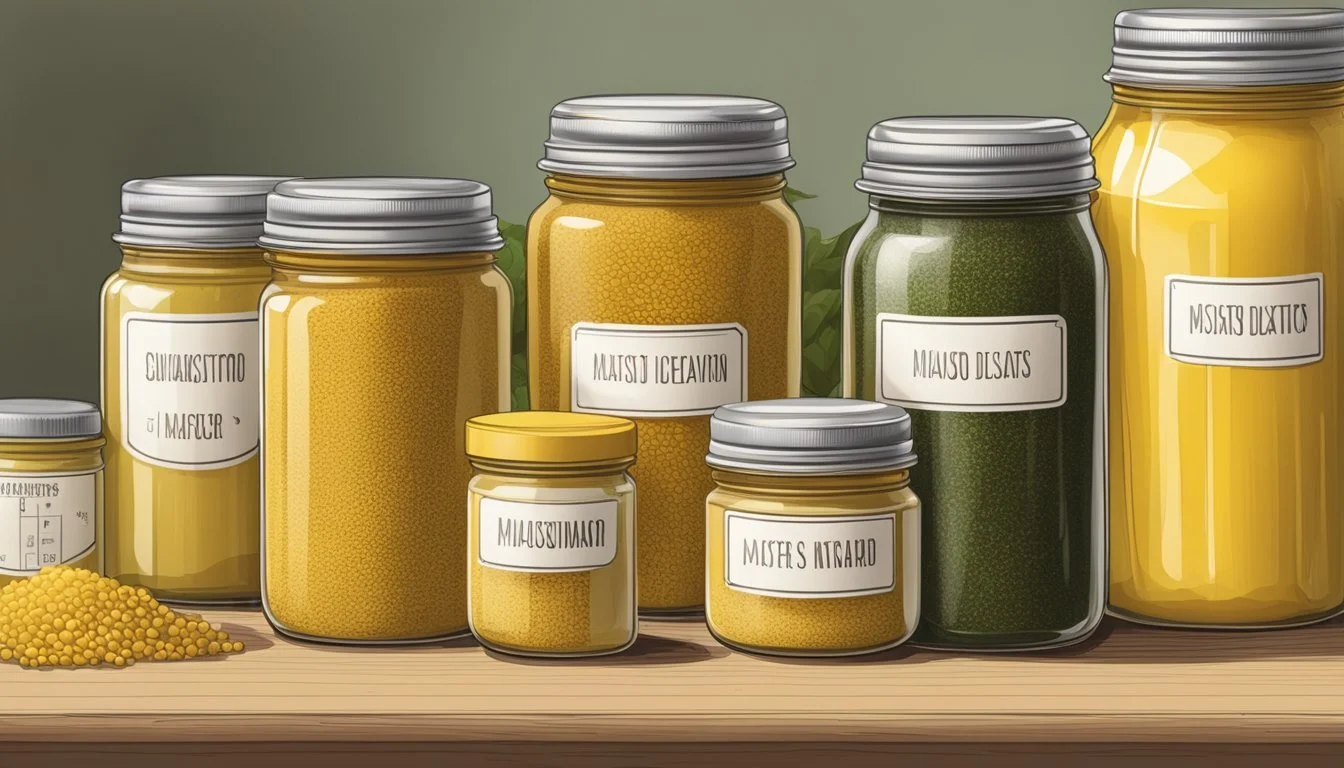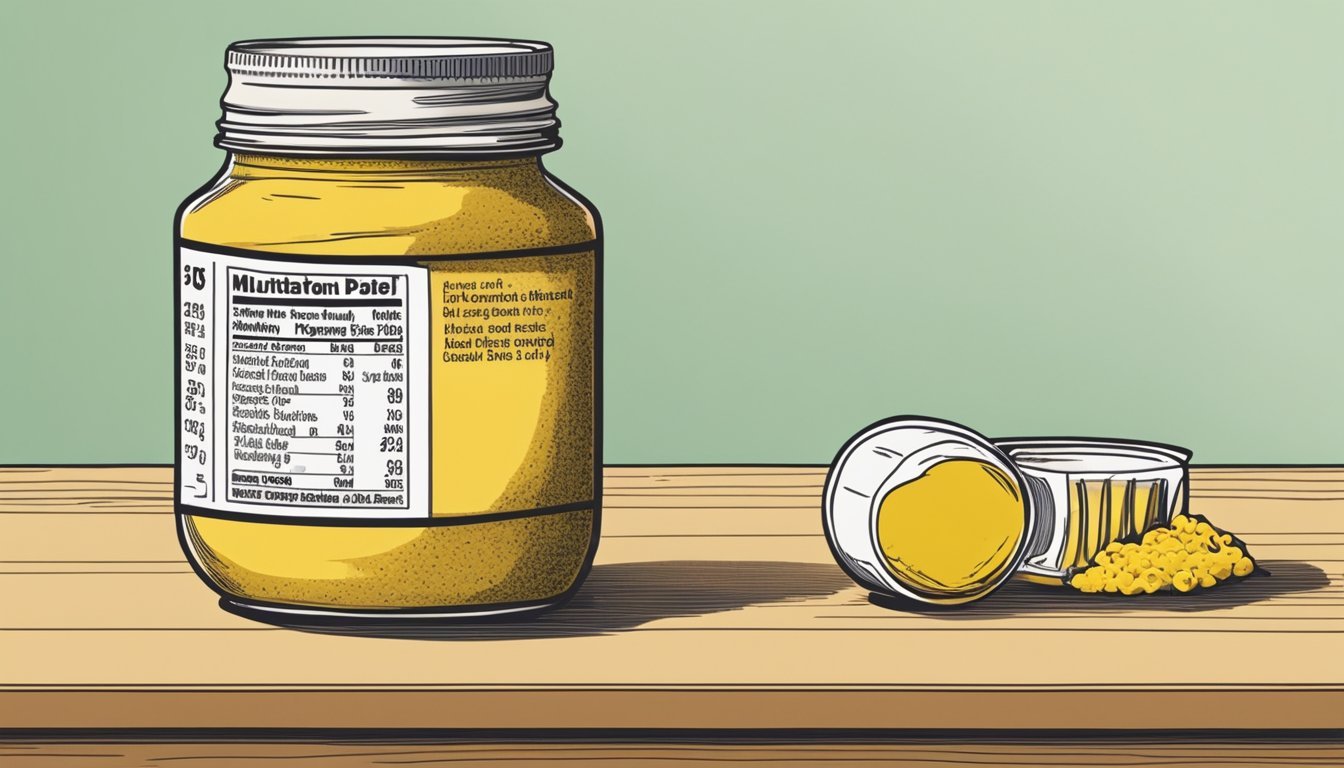How Long Does Mustard Last?
Shelf Life and Storage Tips
Mustard (how long does mustard last?) is a widely used condiment that comes in various forms, including yellow, Dijon, and whole grain. Its longevity is owed to its acidic nature, which helps to preserve it. When stored in a pantry, an opened bottle of mustard generally remains in good condition for 1 to 2 months. However, users can extend the shelf life by refrigerating the opened mustard, allowing it to maintain its best quality for around 12 to 18 months.
The shelf life of mustard varies depending on the type and how it is stored. For instance, Dijon mustard, with a higher vinegar content, can last unopened for two to three years at room temperature and up to one year in the refrigerator once opened. Chinese mustard follows a similar pattern, often lasting for one to two years when unopened and stored in a pantry. Properly understanding these storage guidelines ensures that mustard not only stays safe to consume but also retains its intended flavor profile.
Understanding Mustard as a Condiment
Mustard is a globally recognized condiment with a variety of types such as yellow mustard, Dijon mustard, honey mustard, whole grain mustard (how long does whole grain mustard last?), American mustard, and Chinese mustard. Each type has a distinct taste profile ranging from the classic tangy zing of yellow mustard to the creamy consistency and subtle sweetness of honey mustard. The pungent flavor of Dijon and the sharpness of Chinese mustard are due to their unique ingredients and preparation methods.
The base ingredients for mustard typically include water, vinegar, or wine, and spices. Vinegar serves as an acidic component, which not only imparts flavor but also preservatives quality, resulting in a longer shelf life. For example:
Yellow mustard: It's known for its vibrant color and mild, tangy taste, often flavored with turmeric and paprika.
Dijon mustard: Originating from Dijon, France, this variety is smoother in texture and has a more complex flavor profile, made with white wine.
Whole grain mustard: It contains partially crushed mustard seeds, providing a rustic and hearty texture.
Chinese mustard: It is characterized by its heat, usually enhanced by the addition of hot liquids or spices.
Quality, flavor, texture, and aroma are essential factors in evaluating mustard. Over time, these attributes can diminish, although mustard can last for years beyond its "best by" date when stored properly. However, the preservation of mustard’s quality is highly dependent on storage conditions, where cool and dark environments are preferred. Mustard's longevity and taste rely not only on its ingredients—the acidic nature retarding bacterial growth—but also on its storage after opening, with refrigeration helping to maintain freshness.
Mustard Varieties and Composition
Mustard, as a condiment, comes in several varieties, each with a unique composition that influences its flavor, texture, and shelf life. These varieties are created using different types of mustard seeds and may include varying amounts of spices, acidic components like vinegar, and additional ingredients for flavor and preservation.
Yellow Mustard
Yellow mustard, often referred to simply as "regular" mustard, is made from white mustard seeds ground to a smooth texture. The seeds are mixed with spices, salt, lemon juice or vinegar, which gives it an acidic taste, and turmeric, which provides its bright yellow color. It is known for its mild flavor and is commonly used in a variety of culinary applications.
Dijon Mustard
Originating from Dijon, France, Dijon mustard is a pale yellow to brownish condiment. It is made primarily from brown mustard seeds and white wine or a mix of water and vinegar. The seeds are partially ground, contributing to Dijon's characteristically smooth texture. Its flavor is often more intense than yellow mustard, with a sharp, strong, and somewhat spicy taste.
Honey Mustard
Honey mustard combines the sweetness of honey with the tangy flavor of mustard. It's typically made from yellow mustard seeds (how long do yellow mustard seeds last?), honey, spices, and vinegar or another acidic ingredient. This mustard variant has a milder spicy flavor balanced with a notable sweetness, making it particularly popular in dressings and as a dipping sauce.
Whole Grain Mustard
Whole grain mustard, also known as coarse ground mustard, is made using partially crushed mustard seeds, allowing it to retain a grainy texture. It often combines a variety of mustard seed types and includes vinegar and spices, which contribute to its bold and piquant flavor profile. Whole grain mustard is distinguished by its rustic appearance and is commonly used to add texture and robust flavor to dishes.
Shelf Life Fundamentals
Understanding the fundamentals of shelf life is crucial for maintaining the freshness and quality of mustard. Shelf life can be influenced by various factors and it's important to differentiate between expiration dates and actual quality.
What Influences Shelf Life?
Shelf life is determined by several conditions, notably:
Type of Mustard: Dijon, honey, or yellow mustard, each variety has its own shelf life.
Storage Conditions: The environment where the mustard is kept, whether refrigerated or at room temperature, can extend or reduce its longevity.
Storage Method: Unopened mustard in a pantry versus an opened container in the fridge.
Preservatives: The presence of vinegar and other natural preservatives in mustard aids in retaining freshness.
Packaging: The integrity of the mustard's container, and whether it is sealed properly after each use.
Expiration Date Versus Quality
The terms related to the longevity of mustard include:
Best By/Best-Before Date: This is the manufacturer's estimate of when the mustard will remain at its best quality, not its safety.
Expiration Date: Often mistaken with the best-by date, but it is more related to the quality rather than safety.
Quality Over Time: Mustard's freshness may degrade after the best-by date, but it can often remain safe for consumption if stored properly.
Shelf Life of Mustard: Generally, unopened mustard can last up to 3 years, and once opened and refrigerated, it can last for 1 to 2 years while retaining best quality.
Proper Storage Conditions
Proper storage conditions are essential to extending the shelf life of mustard. They ensure that both unopened and opened mustard retains quality and flavor for longer periods.
Storing Unopened Mustard
Unopened mustard should be kept in a cool, dry place such as a pantry or cupboard. Ideally, the temperature should be consistent and away from direct sunlight. These conditions help preserve the mustard's quality up to its best-by date and potentially longer.
Storing Opened Mustard
Once opened, mustard's shelf life is best preserved by storing it in the fridge. An opened mustard container should be tightly sealed and kept refrigerated at a constant, cool temperature. This can significantly extend its usability, maintaining good quality for up to 12-18 months.
Importance of Temperature
Maintaining a cool temperature is crucial. For dry mustard, cooler temperatures can prolong its usability indefinitely. Refrigeration for liquid mustard slows down spoilage by inhibiting the growth of harmful bacteria.
Avoiding Contamination
To prevent contamination and cross-contamination, always use a clean utensil when extracting mustard from the container. This practice is key to food safety and extends the condiment's shelf life by preventing the introduction of spoilage-causing microbes.
Identifying Spoilage and Maintaining Quality
When it comes to mustard, longevity, and quality go hand in hand. Understanding the signs of spoilage and employing the right storage methods are critical to maintain mustard's quality.
Signs of Spoilage
Mustard's high acidity typically affords it a long shelf life, but it can spoil if not stored properly. One must be vigilant for changes in appearance, smell, and texture.
Appearance: Look for any changes in color or the presence of mold. Mustard that has darkened or looks dried out may be past its prime.
Smell: Mustard should have a piquant smell. Any sour smell or off odors is an indicator that the mustard may not be safe to consume.
Texture: Good mustard should have a consistent texture. Separation of ingredients or a watery layer on top can suggest spoilage.
Preserving Mustard Quality
To preserve mustard's quality and extend its longevity, proper storage is essential. Mustard is resilient due to its high acidity, but it should still be protected from factors that accelerate spoilage.
Storage:
Store unopened mustard in a cool, dark place like a pantry to prevent bacteria growth.
Once opened, mustard should be kept in the refrigerator. The cold environment slows down spoilage and maintains quality for about a year.
Container: Use an airtight container to protect the mustard from air exposure, which can lead to spoilage.
Hygiene: Always use clean utensils to scoop mustard to prevent the introduction of bacteria.
Frequently Asked Questions
How long can mustard be stored?
Unopened mustard typically has a shelf life of 2-3 years when stored in a cool, dark pantry. Once opened, mustard maintains best quality for about 1-2 years in the refrigerator.
Does mustard ever spoil?
Mustard can spoil, but due to its high acidity, it's less likely to harbor bacteria. Signs of spoilage include an off smell, color change, or separation issues.
Do different types of mustard have different shelf lives?
The presence of preservatives and the type may affect shelf life. Homemade mustard, with fewer preservatives, generally lasts about a month in the refrigerator.
Should mustard be refrigerated after opening?
For best quality and flavor, opened mustard should be stored in the fridge. Sealed mustard, however, can be kept at room temperature until its best-by date.
Can mustard be used past its expiration date?
Mustard can often be consumed past its best-by date if it shows no signs of spoilage. Always inspect the condiment for freshness.
What affects mustard's longevity?
Storage conditions heavily influence mustard's shelf life. Mustard powder (how long does mustard powder last?), for example, can last several years if kept in an airtight container in a dry, dark place.
Is there a way to tell if mustard is no longer of good quality?
A sour or unpleasant taste, a deviant aroma, or textural changes indicate that the mustard may not be of good quality any longer.
Complementary Condiments and Usage Tips
When incorporating mustard into meals, one can consider a variety of complementary condiments to enhance flavors. Classic yellow mustard pairs well with ketchup on hot dogs and burgers, creating a balance of tangy and sweet tastes. Mayo, with its creamy texture, often accompanies mustard in sandwiches and salad dressings for added richness.
For a more robust flavor, whole grain mustard can be mixed with condiments like horseradish or hot sauce to give a kick to meats and cheeses. In preparing vinaigrettes and marinades, mustard can act as an emulsifier when whisked with oil and vinegar.
Ideal Pairings:
Classic Yellow Mustard:
Ketchup
Mayo
Whole Grain Mustard:
Horseradish
Hot Sauce
Below is a quick reference table for incorporating mustard into dishes:
Condiment Pairing Suggestion Meal Type Classic Yellow Ketchup and Mayo (on burgers and hot dogs) Fast Food Whole Grain Horseradish (with roast meats) Fine Dining Dijon Honey (in dressings) Salads
To ensure the quality of mustard, and consequently the dishes in which they are used, it is important to follow storage tips and keep an eye out for signs of spoilage. One should always check the consistency, color, and smell of mustard before use.
Remember that the shelf life of mustard can be extended if stored properly in a cool, dry place before opening and refrigerated after opening. The freshness and safety of mustard may significantly outlast the "best by" date if these guidelines are adhered to.





